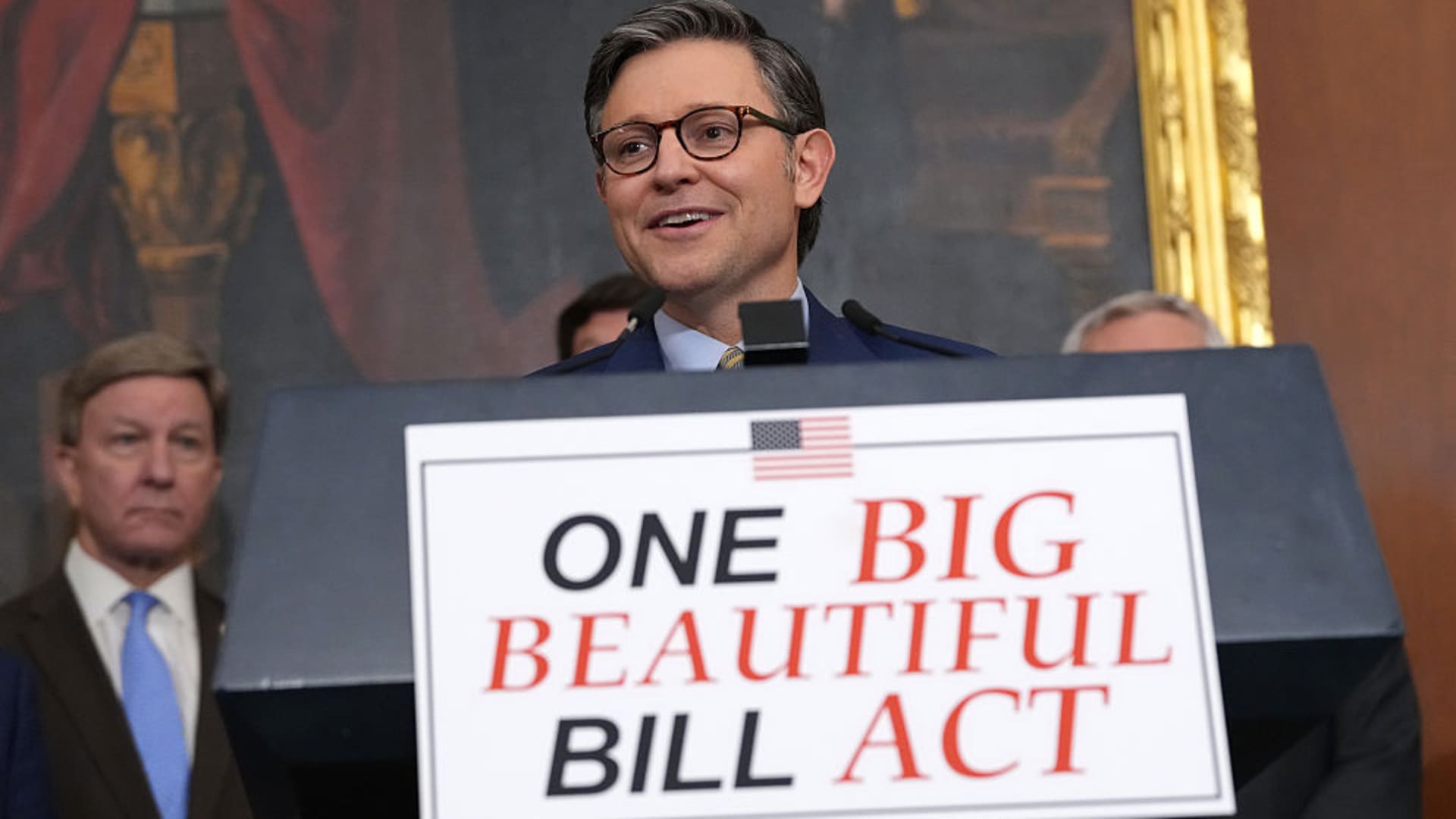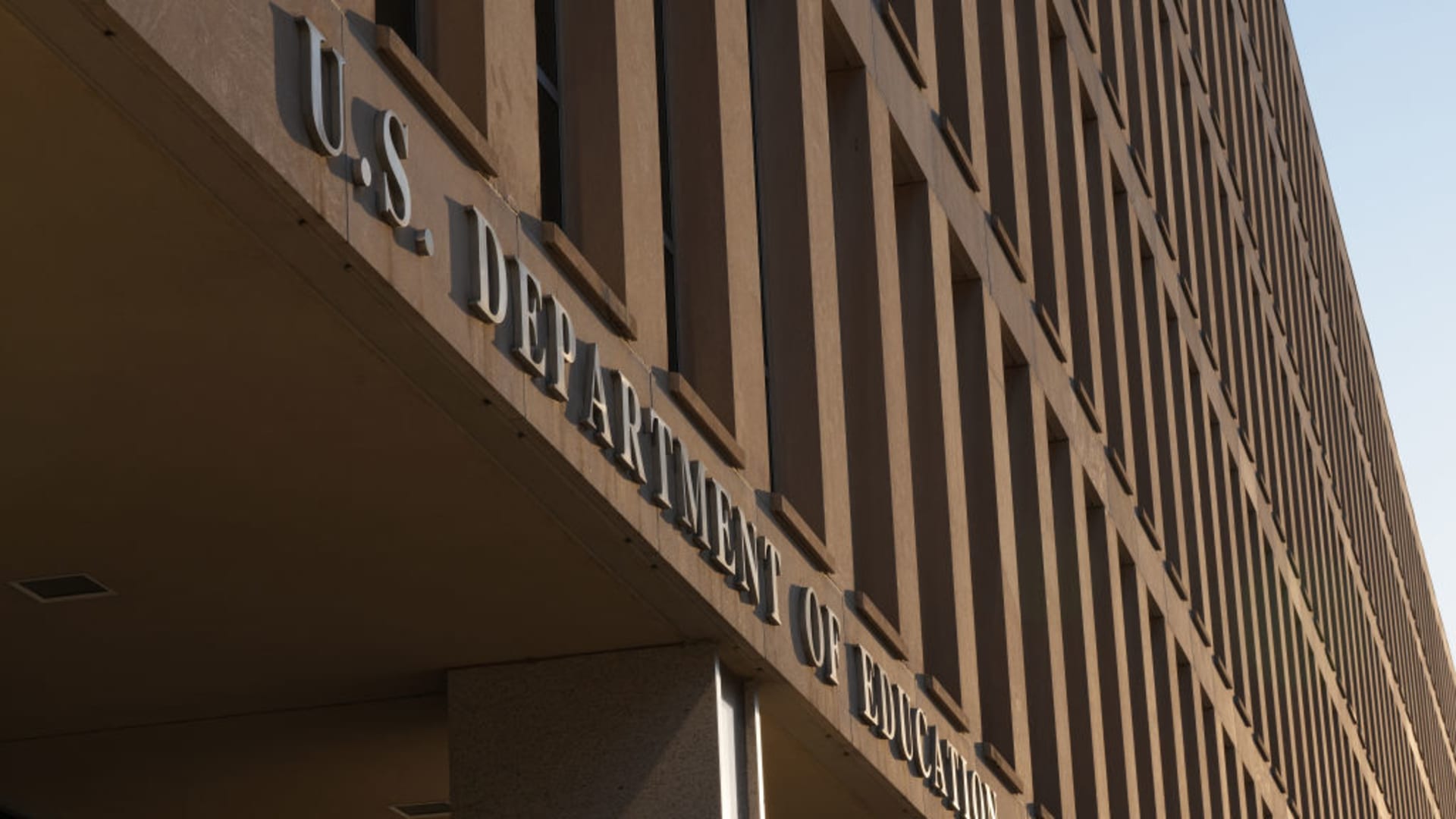Speaker of the House Mike Johnson, R-La., speaks to the media after the House narrowly passed a bill forwarding President Donald Trump’s agenda at the Capitol on May 22, 2025.
Kevin Dietsch | Getty Images
As Senate Republicans debate trillions of tax breaks advanced by the House, some business owners could be blocked from part of the proposed windfall, policy experts say.
If enacted as written, the House GOP’s “One Big Beautiful Bill Act” would raise the federal deduction limit for state and local taxes, known as SALT, to $40,000. That would phase out once income exceeds $500,000.
The bill would also boost a tax break for pass-through businesses, known as the qualified business income, or QBI, deduction, to 23%. But the measure would end a popular state-level SALT cap workaround for certain pass-through business owners.
More from Personal Finance:
How child tax credit could change as Senate debates Trump’s mega-bill
How tax cuts in Trump’s ‘big beautiful bill’ could change in the Senate
Republicans’ plan for student loans would mean ‘indentured servitude’: expert
Here’s what to know about the proposed change and who could be impacted.
SALT deduction cap ‘workaround’
Enacted via the Tax Cuts and Jobs Act, or TCJA, of 2017, there’s currently a $10,000 limit on the SALT deduction for filers who itemize tax breaks. This cap will expire after 2025 without changes from Congress. The SALT deduction was unlimited before TCJA, but the so-called alternative minimum tax reduced the benefit for some higher earners.
The cap has been a pain point in high-tax states like New York, New Jersey and California because residents can’t deduct more than $10,000 for SALT, which includes income, property and sales taxes.
However, most states now have a “workaround” to bypass the federal SALT deduction limit for pass-through business owners, explained Garrett Watson, director of policy analysis at the Tax Foundation.
As of May 9, some 36 states and one locality, New York City, have enacted a workaround — the pass-through entity, or PTE, level tax — since the 2017 TCJA limitation, according to the American Institute of Certified Public Accountants, or AICPA.
While each state has different rules, the strategy generally involves paying individual state and local taxes through a pass-through business to sidestep the $10,000 cap, Watson said. Owners can then deduct their share of SALT paid.
How the SALT workaround could change
Certain white-collar professionals — doctors, lawyers, accountants, financial advisors and others — known as a “specified service trade or business,” or SSTB, can’t claim the qualified business income deduction once income exceeds certain limits.
As advanced, the House bill would block SSTBs from using the SALT deduction workaround, which would be “substantial” for those impacted, Watson said.
Meanwhile, some non-SSTB pass-through businesses would have two benefits under the House-approved bill. Depending on income, they could qualify for the bigger 23% QBI deduction. They could also still claim an unlimited SALT deduction via the PTE workaround, experts say.
The revised provision has faced some pushback among certain organizations.
“This loophole is likely expensive, and lawmakers and the public should demand a clear accounting of the fiscal cost to bless workarounds for this favored group,” New York University Tax Law Center deputy director Mike Kaercher said in a statement after the revised House bill text was released in late May.
Some industry groups, such as AICPA, have urged the Senate to maintain the SALT deduction workaround for SSTBs.
If the House bill is enacted as written, SSTBs would be “unfairly economically disadvantaged” by existing as a certain type of business, AICPA wrote in a May 29 letter to the Senate.
Since many SSTBs can’t organize as a C corporation, there’s “no option to escape the harsh results of the SSTB distinction,” which could limit these professionals’ SALT deduction, AICPA wrote.


 Blog Post3 days ago
Blog Post3 days ago
 Economics1 week ago
Economics1 week ago
 Personal Finance7 days ago
Personal Finance7 days ago
 Accounting1 week ago
Accounting1 week ago
 Economics7 days ago
Economics7 days ago
 Economics1 week ago
Economics1 week ago
 Personal Finance1 week ago
Personal Finance1 week ago
 Finance7 days ago
Finance7 days ago









